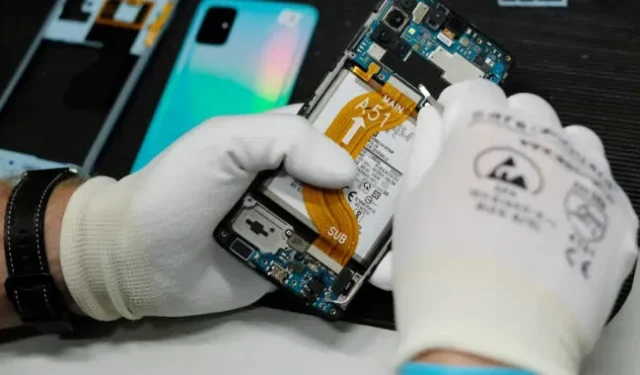European Commission regulators have suggested that smartphones and tablets sold there offer 15 different types of replacement parts for at least five years as part of a broad effort to reduce their environmental impact.
The draft regulation, “Ecodesign Requirements for Mobile Phones, Wireless Phones and Tablets,” published on August 31, notes that phones and tablets are “often prematurely replaced by users” and “underused or recycled” (Vol.-ed) at the end of their lives. Cost is energy and new materials mined from the ground for new phones and unrecycled materials stored in homes. Extending the lifespan of smartphones by five years – from their current typical two to three years – is equivalent to taking 5 million cars off the road, according to the Commission’s findings.
The most notable proposed fix (listed in Appendix II) is for phone manufacturers and sellers to provide “professional repairmen”for five years after the phone’s withdrawal date. These repairers will have access to parts including the battery, display, cameras, charging ports, mechanical buttons, microphones, speakers, and hinge assemblies (including those for foldable phones and tablets).
Phone companies also have a choice: either provide phone owners with replacement batteries and back panels, or develop batteries that meet minimum standards. These include maintaining 83 percent of rated capacity after 500 full charge cycles, and then 80 percent after 1,000 full charge cycles. Apple, for example, currently claims that its iPhones are rated to retain 80 percent capacity after 500 charge cycles.
Smartphone buyers also get access to displays, SIM and memory card trays, microphones, charging ports and hinges under the proposed rules. And repair instructions for all of these parts should be available for seven years after the last day the devices were sold, with relatively open systems for registration and access by professional repairmen. The repair instructions should also be quite extensive, including exploded view pictures, board and wiring diagrams if needed, and access to the software needed to authorize any blocked parts.
There is much more in the proposed rules, both in terms of repair and reliability. Of particular note is the requirement that companies provide security updates for at least five years, “feature updates”for three years, and both updates offered two to four months after the public release of security patches or “same operating system update”. .. . on any other product of the same brand.” For Android vendors, this will be a seismic shift in software support.
European regulations for smartphones have been slowly moving forward in recent years, thanks to initiatives such as a maintainability assessment in France and EU-wide adoption of USB-C by 2024. But the Commission’s draft rule goes beyond even the most aggressive goals of the US right to repair traffic. State and federal repair bills typically require manufacturers to supply only the same parts, tools, and manuals that they would provide to their repair technicians or licensed shops. Apple, Samsung and Google have recently offered more details and repair options, but this falls far short of what the Commission has proposed.
Feedback on proposals will be collected from now until 28 September. A version of these proposals is to be adopted in the fourth quarter of 2022, and most of them should be effective 12 months after approval.
It’s too early to comment, but manufacturers aren’t thrilled about the mandatory refurbishment.
Tech trade group Digital Europe told the Financial Times that “potential overproduction, subsequent warehousing and destruction of spare parts”would result in losses and higher prices for customers.
The Xiaomi branch in the Netherlands provided feedback on the broader goals of the EU initiative in January 2021. The spokesperson wrote that while he acknowledges the importance of software updates, “operating system support is often dependent on third parties, who may sometimes not provide software versions that are compatible with all supported operating system versions.”
Xiaomi also stated that repairs “should be carried out within our authorized repair network using original parts”to ensure “quality and reliability”. Providing spare parts and manuals to “third-party professional repairers whose level of technical skill, repair time and cost, and likelihood of success”is unknown “poses serious risks to consumers in terms of quality, safety and protection.”


